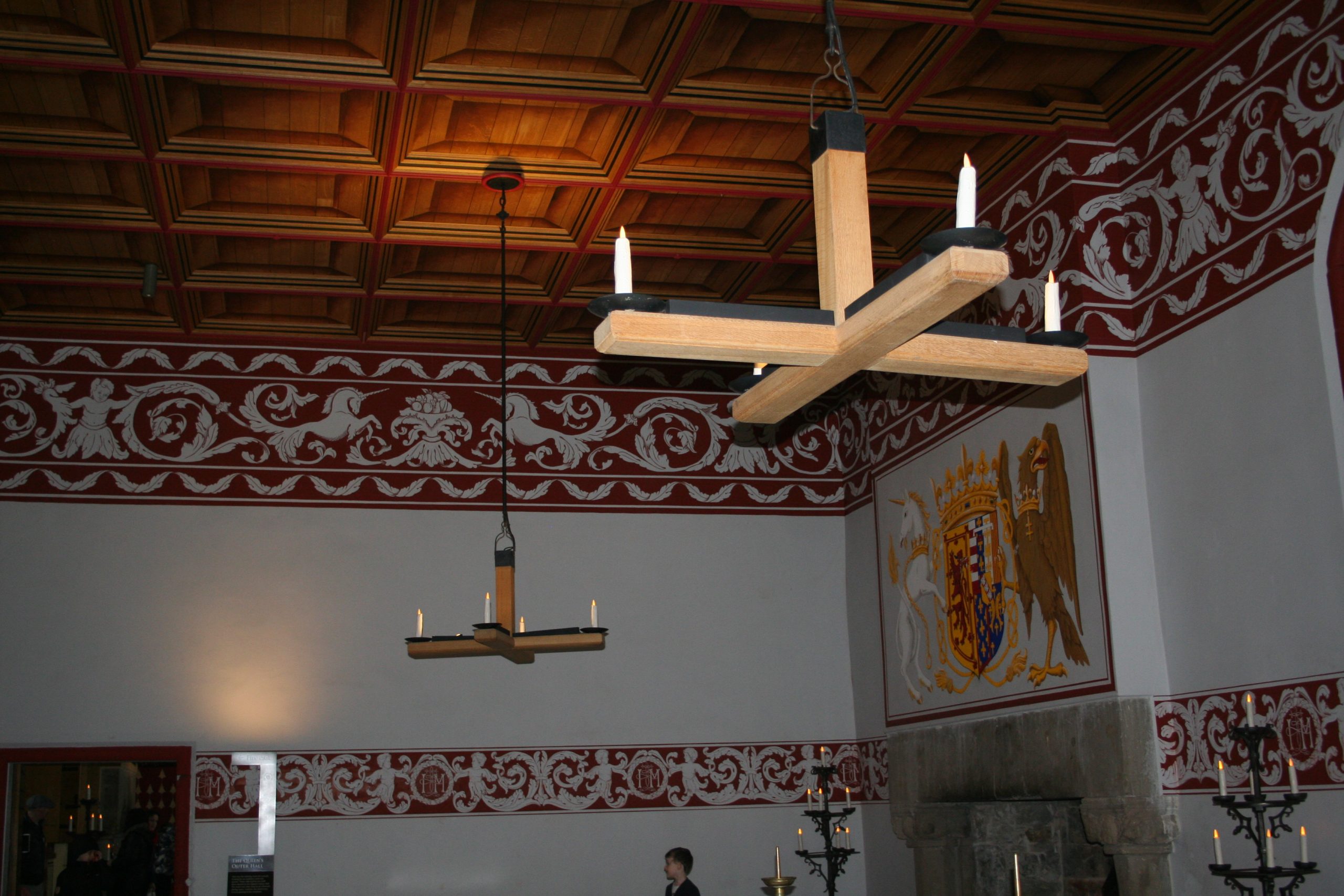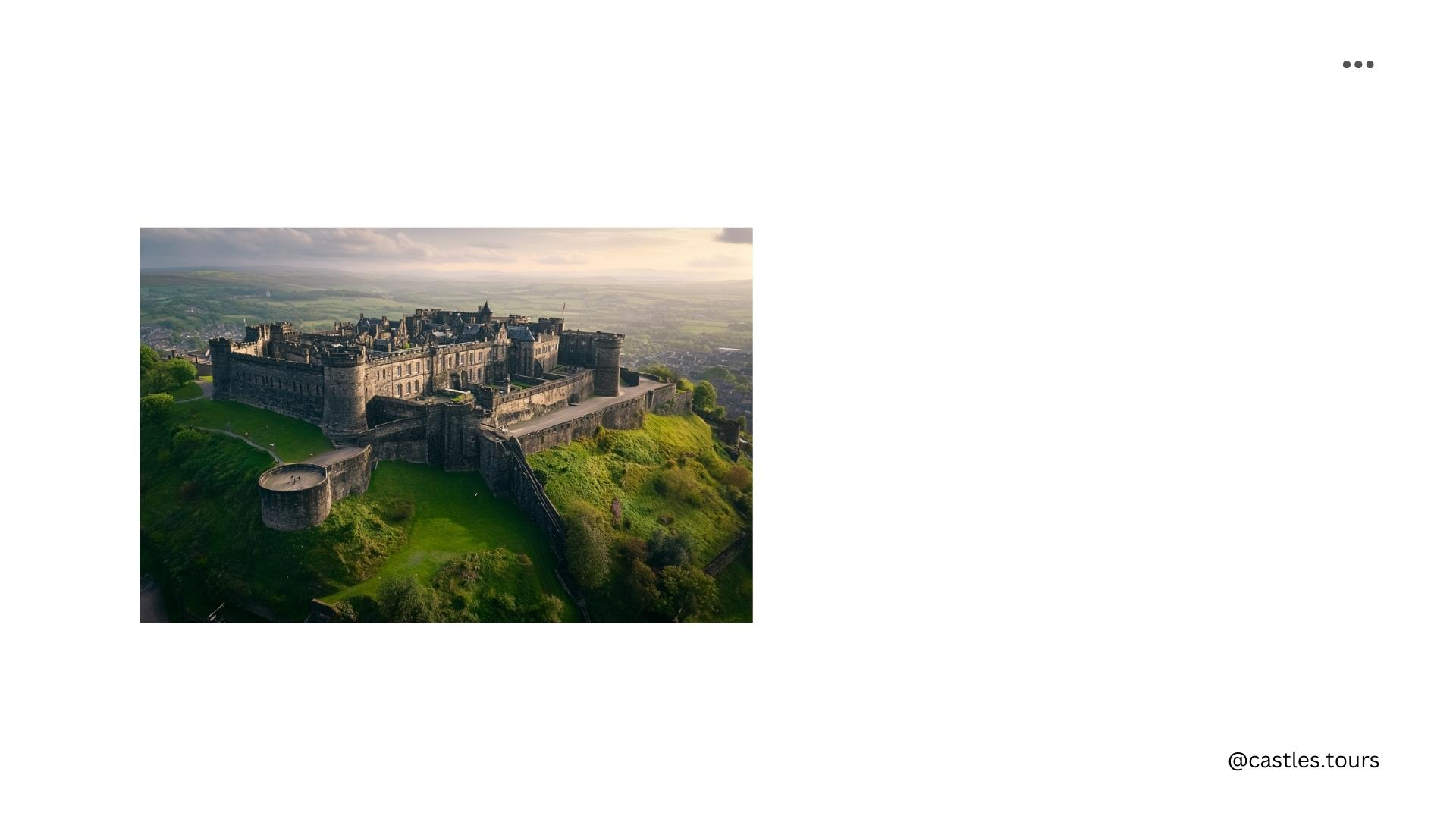Stirling Castle is a true architectural gem in the heart of Scotland, boasting a rich history and a stunning blend of medieval and Renaissance styles. From the grand Royal Palace to the impressive Great Hall, this castle’s architecture is a testament to the ambitions and cultural influences of the Stewart dynasty.
The Royal Palace: A Renaissance Masterpiece

The Royal Palace at Stirling Castle is a prime example of Renaissance architecture in Scotland. Built for James V in the 1540s, the palace reflects the European Renaissance fashions of the time, showcasing a mix of English, French, and German influences. The exterior is adorned with Greco-Roman gods, while the interior consists of a series of intimate rooms, including the outer chamber, the privy chamber, and the monarch’s bedchamber. This design allowed the king to receive guests in a hierarchical manner, with the most important visitors being admitted to the innermost chambers.
The Grandeur of the Great Hall

The Great Hall at Stirling Castle is the largest medieval banqueting hall ever built in Scotland. Completed for James IV in 1503, it features four pairs of tall windows at the dais end, where the king and queen sat. The exterior walls are rendered in Royal Gold harling, as they would have been in the 1500s. The Great Hall was a symbol of power and grandeur, hosting lavish banquets and receptions for the royal family and their guests.
The Chapel Royal: A Renaissance Masterpiece
The Chapel Royal, built in 1593-4, is one of the first Protestant kirks in Scotland and the last royal building at the castle. It was constructed on the orders of James VI for the baptism of his son and heir, Prince Henry. The chapel reflects the Renaissance influence on Stirling Castle’s architecture, with its elegant design and ornate details. It is a testament to the cultural and artistic developments of the time.
Other Architectural Highlights
- King’s Old Building: Built for James IV in 1496, this building is one of the earliest structures in the castle and features a mix of medieval and Renaissance architectural styles.
- Forework: Derived from French military architecture, the Forework was built by James IV and added military details for style rather than defense.
- Gardens: The Queen Anne Gardens have been in existence since the 1400s and were turned into a bowling green in the 1620s. The gardens also feature a 200-year-old beech tree.
Restoration and Management
Stirling Castle is managed by Historic Environment Scotland and has undergone significant restoration work. The Great Hall was restored to its original appearance in the 1990s, and parts of the Palace interior have been refurbished in the style of the mid-16th century.
Visitor Information
| Detail | Information |
|---|---|
| Opening Hours | 9:30 am to 6:00 pm (April to September), 9:30 am to 5:00 pm (October to March) |
| Admission Prices | Adult £16.50, Concession £13.50, Child £9.50, Family £43.50 |
| Address | Stirling Castle, Stirling, FK8 1EJ |
Stirling Castle’s architecture is a captivating blend of medieval and Renaissance styles, reflecting the ambitions and cultural influences of the Stewart dynasty. From the grand Royal Palace to the impressive Great Hall, this castle is a must-visit destination for anyone interested in Scotland’s rich architectural heritage.
References
- Historic Environment Scotland. (n.d.). Stirling Castle. Retrieved from https://www.historicenvironment.scot/visit-a-place/places/stirling-castle/
- Wilderness Scotland. (2023, April 5). Stirling Castle – A Monument to Change. Retrieved from https://www.wildernessscotland.com/blog/stirling-castle/
- Wikipedia. (n.d.). Stirling Castle. Retrieved from https://en.wikipedia.org/wiki/Stirling_Castle
- World History Encyclopedia. (2021, April 16). Stirling Castle. Retrieved from https://www.worldhistory.org/Stirling_Castle/
- Historic Environment Scotland. (n.d.). Stirling Castle: History. Retrieved from https://www.historicenvironment.scot/visit-a-place/places/stirling-castle/history/.
